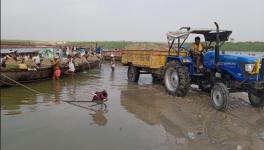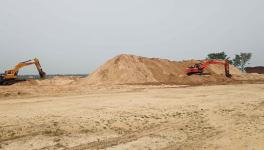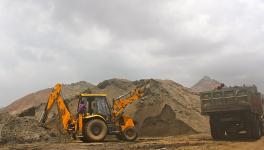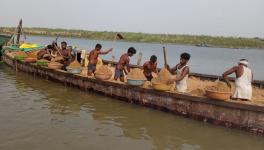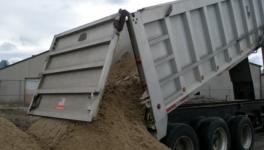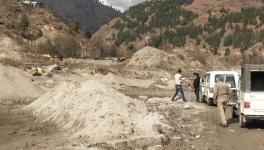Sand Mafia: A Network of Politicians, Construction Companies and Criminals
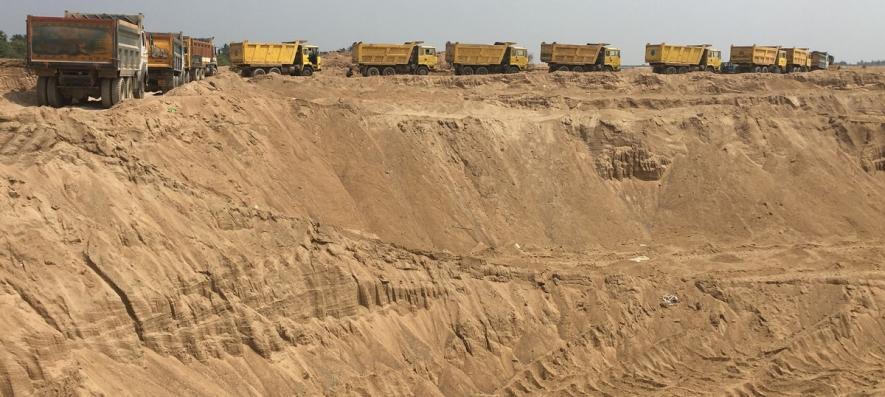
The collapse of Mularpatna Bridge, the first ever bridge in the coastal region in Karnataka, on June 26, 2018, has brought the stronghold of Sand Mafia in the region into the limelight yet again.
The locals have been informing the officials about the illegal extraction of sand at the base of the bridge, weakening and damaging the pillars supporting the bridge. But all the cases of complaints reporting illegal sand mining or operation of Sand Mafias made by the locals were ignored. So, if the complaints had been taken seriously, would the authorities have stopped the functioning of the Sand Mafia? Looking at the previous cases filed against the Mafia and the developments around them say, the answer would most likely be a ‘no’. Intimidated by the might of the Mafia, the complaints are almost always withdrawn by the complainants; and as in the case of Mularpatna, the complaints are ignored altogether.
The Mafia is a network of influential politicians, powerful, and established construction companies and miners, who function in open daylight throughout the state. This influential network has figured it's ways to function openly by breaching all the existing rules and regulation. The officials at Department of Mines and Geology have registered16 cases daily related to Sand Mafia in Karnataka from 2015-2017. As many as 12,318 cases were booked during this period, all of them mentioning illegal sand mining, transportation, storage, and use of filter sand. The numbers here explain the scale of operation the Mafias are running in the state.
Read More: India’s Rivers in Ruined Condition Due to Unchecked Illegal Sand Mining
And the Mafia is not restricted to just Karnataka. Due to its lobby with the construction companies, it is spread out across the country. In the National Capital Region (NCR) alone, 300 truckloads of sand are collected every day. In Andhra Pradesh, reports suggest that 2,000 truckloads of sand reach Hyderabad every day from the beds of the Krishna and Godavari rivers. Environmentalists and experts say this illegal mining is responsible for erosion and is changing the flow of rivers. The Yamuna, for instance, has shifted its course by 500 metres and is posing a threat to flood embankments in Noida. In 2017, Maharashtra accounted for almost 40 percent of illegal mining in India, highest in the country. Between 2015-16, 30,979 cases on illegal sand mining were registered in Maharashtra alone.
According to the Union Environment Ministry guidelines, sand is considered to be a minor mineral and its mining falls under state jurisdiction. The Mines and Minerals Act of 1957 (Development and Regulation) states:
The holder of a mining lease or any other mineral concession granted under any rule made under sub-section (1) shall pay [royalty or dead rent, whichever is more] in respect of minor minerals removed or consumed by him or by his agent, manager, employee, contractor or sub-lessee at the rate prescribed for the time being in the rules framed by the State Government in respect of minor minerals: Provided that the State Government shall not enhance the rate of [royalty or dead rent] in respect of any minor mineral for more than once during any period of [three] years.]
According to the Act, the miners are answerable to the state governments. They are expected to first obtain a licence from the respective state governments and also pay a royalty for the amount of sand that they mine. Since sand is the basic requirement for the construction companies there exists a lobby of miners and builders. The laws are stringent and it is not very easy to obtain the license to mine sand. The construction companies, in a bid to yield profits, surpass the laws and the regulations.
Read More: “My Sea, My Sand”
To avoid all the formalities the builders turn towards the Mafia, an influential network of corrupt officials, poor farmers and local middlemen.
The state governments, as per the law, is the only authority over allocation of the mining sites. But as Mafias are used to bending the rules for the companies, the mining is begun anywhere on the riverbeds and farmlands. The law also directs the state government to weigh the sand transported in the lorry and keep a check on the amount of soil being extracted. But that is also hardly ever done.
The investment made by the Sand Mafia is too low but the returns are remarkably high. A lorry of sand is sold at around Rs 10,000 and the construction companies demand at least 10 to 15 loads each day. However, according to the law, illegal sand mining could lead to two years of imprisonment or a fine of Rs 25,000 or both.
The criminal network of the Sand Mafias is very violent and anyone who raises their voice against it is snubbed and their cases are easily flushed down.
D K Ravi, a 36-year-old IAS officer, Additional Commissioner in the commercial taxes department, was found dead at his residence in Bengaluru on March 16, 2015. The police had called it a case of suicide, while the CBI report pointed out infidelity that led to the suicide. But when he was serving as the Deputy Commissioner of Kolar District, he had been involved in exposing the functioning of the Sand Mafia in the region. After that, he was transferred from Kolar to Bengaluru, where he was found dead. Sandeep Kothari, a freelance journalist from the Balaghat district in Madhya Pradesh, had written articles for Jabalpur-based dailies on the illegal mining mafia that was active in Katangi and Triodiis. On June 24, 2015, his burnt corpse was found at a farmhouse in Nagpur. On August 7, 2015, Suraj Jatvo, a 30-year-old farmer was killed in Ramgarh, Rajasthan. He along with his brother had raised objection against the illegal sand mining happening close to their farm.
Get the latest reports & analysis with people's perspective on Protests, movements & deep analytical videos, discussions of the current affairs in your Telegram app. Subscribe to NewsClick's Telegram channel & get Real-Time updates on stories, as they get published on our website.










